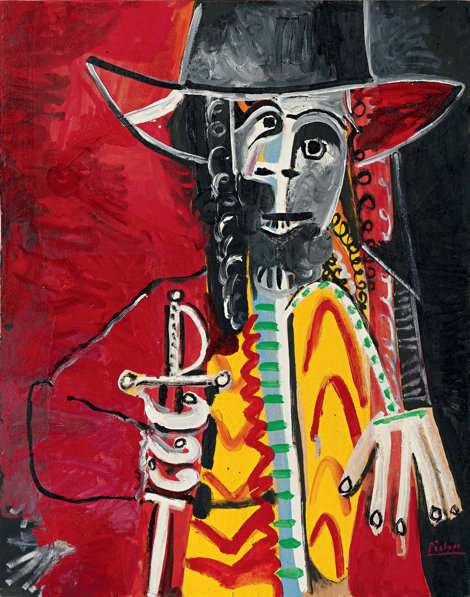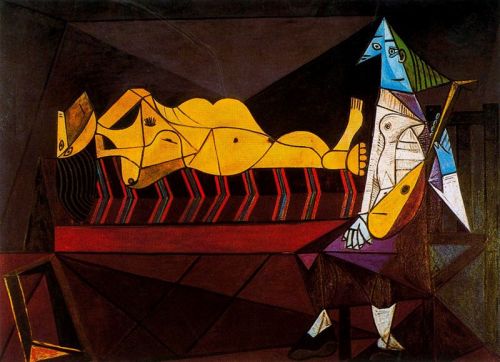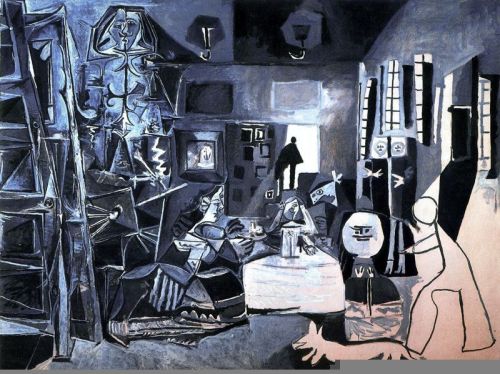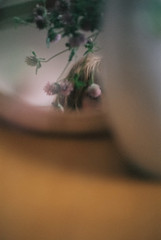Although my art knowledge is very limited but there are some work which I am in love with. This page shows you some of them. I have a deep facination with Georges Braque and Pablo Picasso’s Cubism, and I have tried many time to reconstruct the cubic art, but failed. To understand where the term cubism comes from, we have to digress on the rivalry that existed between Picasso and Matisse. The latter’s Blue Nude painting had caused a public scandal at the Salons des Indépendent (annual Paris art show of contemporary French art) and had caused art critic Louis Vauxcelles to refer to Matisse and his followers as Les Fauves (the wild animals), which led to Fauvism and made Matisse’s reputation as the leading avant-garde artist, something he was very fond of. Matisse’s reputation had grown to the point that he had been allowed to become one of the Salon’s jury members. When Picasso had produced his Demoiselles, many young artists that had previously followed Matisse, began to follow Picasso is his radical new style of painting. One of the converts was Georges Braque.
It is important to fully realize the importance of cubism. It isn’t just “Picasso’s style” but marks the real beginning of abstract art. Picasso’s predecessors, such as the impressionists, the fauvists and Cezanne were still principally tied to nature as a model to elaborate on. With Les Demoiselles d’Avignon Picasso reached a level of abstraction that was a radical enough break with the classical dominance of content over form, a hierarchy which is reversed in Les Demoiselles d’Avignon and the style which followed from it: Cubism. Far from being an art movement confined to the annals of art history, Cubism and its legacy continue to inform the work of many contemporary artists today. Below are Weeping Woman – Dora (Pablo Picasso 1937), Three Musicians (Picasso, Synthetic Cubist style 1921), Male with the sword (Picasso, 1969)
This is a study of how much pain can be communicated by a human face. It has the features of a specific person, Dora Maar, whom Picasso described as “always weeping”. She was in fact his close collaborator in the time of his life when he was most involved with politics. Let your eyes wander over the sharp surface and you are led by the jagged black lines to the picture’s centre, her mouth and chin, where the flesh seems to have been peeled away by corrosive tears to reveal hard white bone. The handkerchief she stuffs in her mouth is like a shard of glass. Her eyes are black apertures.
Picasso’s insistence that we imagine ourselves into the excoriated face of this woman, into her dark eyes, was part of his response to seeing newspaper photographs of the Luftwaffe’s bombing of Guernica on behalf of Franco in the Spanish civil war on April 26, 1937. This painting came at the end of the series of paintings, prints and drawings that Picasso made in protest. It has very personal, Spanish sources. In May 1937 Picasso’s mother wrote to him from Barcelona that smoke from the burning city during the fighting made her eyes water. The Mater Dolorosa, the weeping Virgin, is a traditional image in Spanish art, often represented in lurid baroque sculptures with glass tears, like the very solid one that flows towards this woman’s right ear. Picasso’s father, an artist, made one for the family home.
The central figure is a Harlequin playing a guitar, with two musicians by his sides. There is also a dog that can be seen to the left of the musicians with his ears clearly visible.Each of the two paintings features a Harlequin, a Pierrot, and a monk, who are generally believed to represent Picasso, Guillaume Apollinaire, and Max Jacob, respectively. Apollinaire and Jacob, both poets, had been close friends of Picasso during the 1910s. However, Apollinaire died of the Spanish flu in 1918, while Jacob decided to enter a monastery in 1921.
I must say that these are just few of Picasso’s paintings I have, Picasso was that rare thing in history, an artist of cultic presence, a secular manifestation of the spirit, a genuinely commanding phenomenon. Picasso’s name and work are synonymous with 20th-century art. They are the very definition of our era’s artistic endeavour. This was already the case in his own lifetime; and by now he has long since become a myth, a legend for the age of mass media. Because this is so, Picasso’s image as artist is one of infinite diversity. More on the artist or his work can be accessed from range of websites, or if you are in London or Paris, then why go online ? You might also appreciate the following paintings
Picasso’s work recorded the wartime situation indirectly. The version of “Still Life with Steer’s Skull” (1942) now in Diisseldorf records the German commandant’s order to black out Paris at night. The gloomy, claustrophobic “L’Aubade” conveys the oppressive mood of the war years too. The subtly allusive mode of these paintings reflects a practice common among contemporaries. The younger French abstract artists, for instance, preferred the French national colours of red and blue for their non-representational paintings, for expressly political reasons.
From 17 August to 30 December 1957, Picasso did a series of 58 very different large-scale oils related to “Las Meninas”, painted by the Spanish artist Diego Velazquez in 1656 and so titled after the two maids at court included in it. Picasso took an interest in this famous work for various reasons. Velazquez was and still is considered one of the major figures in European art. Picasso had considered himself one of this company too ever since (at the very latest) the directors of the Louvre invited him, shortly after the Second World War, to hang works of his own alongside major works in the collection. The more about the case can be known from http://www.all-art.org/art_20th_century/picasso15.html














